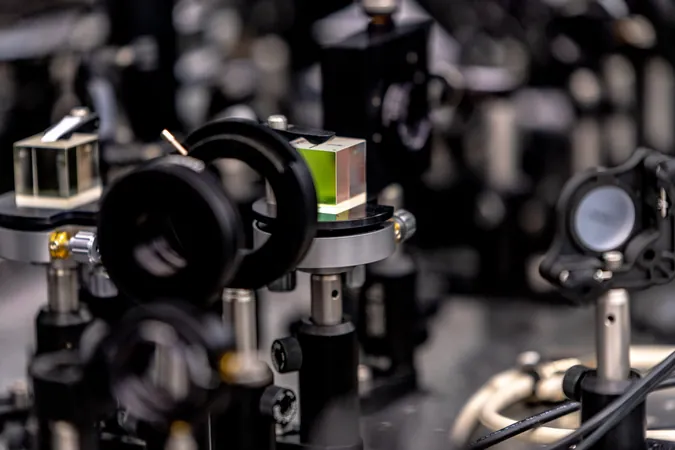
Revolutionary Breakthrough: Scientists Achieve All-Optical Nuclear Magnetic Resonance with Advanced Quantum Fluids of Light
2024-11-05
Author: Wei
Introduction
In an exciting development, researchers from Skoltech, the University of Warsaw, and the University of Iceland have unveiled a groundbreaking method to manipulate the spins of polaritons using optical techniques. This research opens new avenues in quantum physics, particularly in the realm of quantum computing and imaging technologies.
Methodology
Using optical means, the team successfully excited an exciton-polariton condensate, which emitted linearly polarized light that mirrored the direction of the applied optical stirring. Such manipulation of spins through both magnetic and optical fields has far-reaching applications: from enhancing magnetic resonance imaging (MRI) to advancing coherent state control in quantum computing.
Results and Findings
The emitted light's linear polarization rotated with the stirring of the polariton spin, achieving a staggering modulation speed in the GHz range, powered by the ultrafast dynamics characteristic of polariton systems. This phenomenon was found to occur only under specific resonant conditions between the external manipulation and the internal parameters of the system.
One of the most effective methods to drive spins in traditional magnetic systems is Larmor precession, where the magnetic spins rotate steadily around a magnetic field. The current study extends this concept to optical fields, marking a significant evolution in the way we understand and utilize spin manipulation.
All-Optical Approach
Key to this research is the demonstration that an all-optical approach can replicate the effects of conventional nuclear magnetic resonance (NMR) without relying on magnetic fields. The team's previous work had already shown how polaritons behave similarly to magnetic spins under elliptically polarized laser light, thus establishing a foundational basis for this remarkable discovery.
Spin Coherence and Stability
The researchers revealed a coherent resonance effect during their experiments with microcavities cooled to cryogenic temperatures. Their innovative technique for GHz stirring achieved unprecedented phase stability and highlighted a notable spin dephasing time of 174 nanoseconds—20 times longer than previously recorded. This stability is vital for practical applications in both quantum computing and advanced sensing technologies.
Additionally, the researchers recorded a spin coherence time (T2) of 320 picoseconds for polariton condensates, providing insight into potential performance evaluation against other physical systems.
Implications
This discovery is a game-changer that promises to enhance the functionality of spintronic devices that can manipulate coherent, nonlinear, and vectoral light sources. The implications of this research are immense, paving the way for the development of revolutionary quantum technologies, including advanced sensing methods and next-generation continuous variable quantum computing.
With this all-optical manipulation of spin states, there’s exciting potential to extend these capabilities even to room-temperature applications by using materials with more stable exciton resonances.
Conclusion
The groundbreaking work was conducted in the Skoltech Photonics Center, with valuable contributions from a dedicated team of researchers. This breakthrough not only pushes the boundaries of our understanding but could reshape a variety of technological applications for years to come. Stay tuned for more updates on how this discovery could change the landscape of quantum physics and practical applications!


 Brasil (PT)
Brasil (PT)
 Canada (EN)
Canada (EN)
 Chile (ES)
Chile (ES)
 Česko (CS)
Česko (CS)
 대한민국 (KO)
대한민국 (KO)
 España (ES)
España (ES)
 France (FR)
France (FR)
 Hong Kong (EN)
Hong Kong (EN)
 Italia (IT)
Italia (IT)
 日本 (JA)
日本 (JA)
 Magyarország (HU)
Magyarország (HU)
 Norge (NO)
Norge (NO)
 Polska (PL)
Polska (PL)
 Schweiz (DE)
Schweiz (DE)
 Singapore (EN)
Singapore (EN)
 Sverige (SV)
Sverige (SV)
 Suomi (FI)
Suomi (FI)
 Türkiye (TR)
Türkiye (TR)
 الإمارات العربية المتحدة (AR)
الإمارات العربية المتحدة (AR)